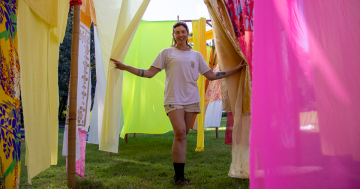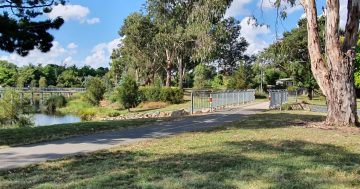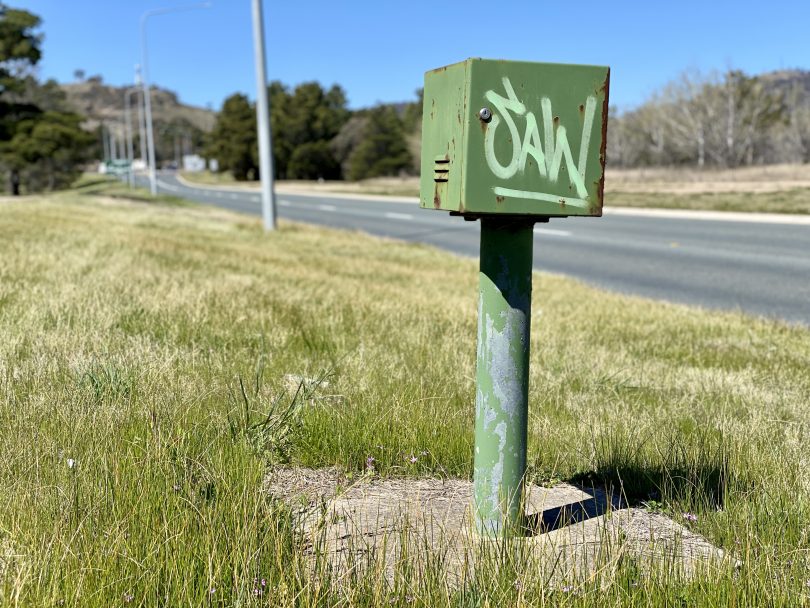
A green metal box mounted to the top of a pole along Johnson Drive in Tuggeranong. Photo: James Coleman.
We understand light poles, bus stops and park benches. And humankind was very nice to make electricity wires for birds to sit on. But there are other items dotted around the place that remain a mystery: roadside green boxes.
It turns out there are two main types of green boxes in the ACT.
The first is one that is perhaps the most easily overlooked. It consists of a locked metal cube mounted on a short pole about one metre tall standing beside the ACT’s older main roads. Canberra is home to more than 100 of these.
Nowadays, when someone at Roads ACT is struggling to sleep, they go out and count the number of vehicles using any particular stretch of road by laying small air-filled tubes across the surface. These are connected to a portable computer in a weather-proof case that tallies up everything that runs across the tubes.
However, back in the 1970s, the brick-like technology wasn’t quite so resilient as to be left outside in the elements tied to a street pole. So the now-defunct National Capital Development Commission (NCDC) placed little metal boxes in strategic places around the ACT.
The computer could be popped into one of these and information gathered on the speed and volume of vehicles going in and out of town centres.
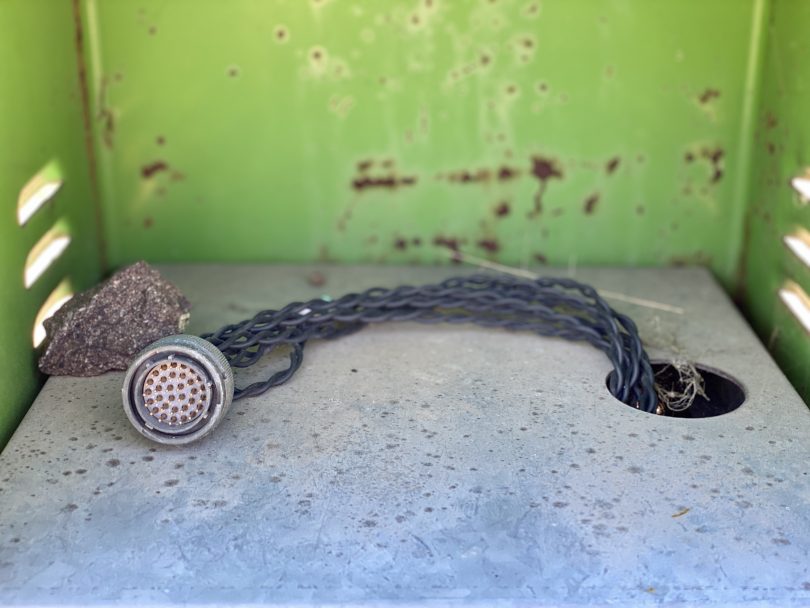
This particular green box has its door broken off, revealing the power cable inside (and a random rock). Photo: James Coleman.
They’re now empty and rusting away, with only a black power cable remaining inside. This cable runs down the pole, into the ground and connects to sensors built into the road surface.
Even in their heyday, the boxes stood empty most of the time. The computer was only ever stowed in one for a short time before being moved to the next box.
The other type of green box is very much still alive.
Ground-mounted transformers, or padmount substations, are green, grey or cream coloured steel or fibreglass enclosures measuring three to four metres long, one to two metres wide, and up to two metres high, with multiple access doors.
Their job is to step down the 11 kilovolts (kV) used in underground power lines to a more mild-mannered 415 or 230 volts for safe use in buildings and homes.
Related to these are switching stations, which work in much the same way as your fuse box at home, where sections of the power network can be shut off to isolate faults, thereby reducing the spread of power outages.
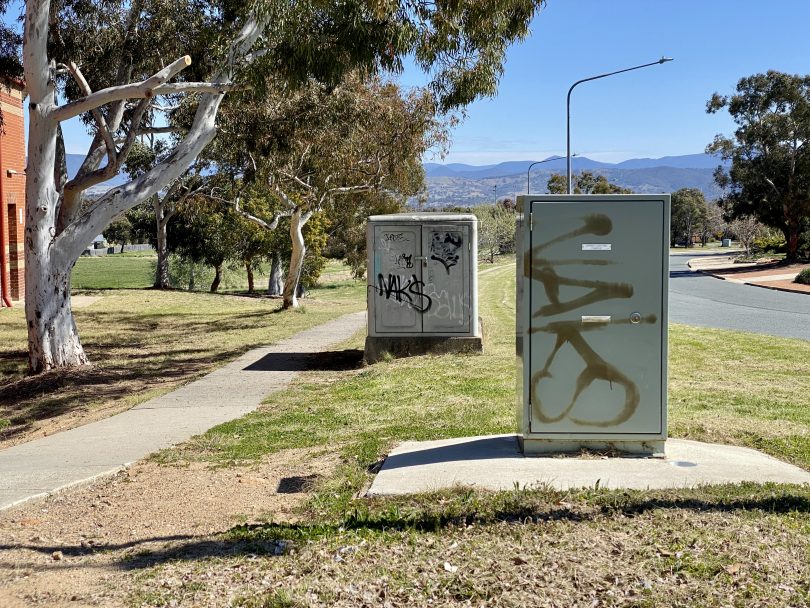
A LV pillar with a padmount substation in the background in Chisholm. Photo: James Coleman.
Where they service large areas, another type called an LV pillar can contain anything from one to six switches and caters to a smaller number of customers.
LV pillars are grey, green, or cream coloured fibreglass, plastic or steel cabinets about 0.5 square metres and one to 1.5 metres high that you might find on the nature strip outside your own home, as well as in other open spaces.
All of these various boxes are managed by Evoenergy who warn that it’s important to keep plants, walls, parked cars, and other obstructions 1.5 metres away from them.
If you see damaged network assets, stay at least eight meters away and report it to Evoenergy on 13 10 93. And although it is dishearteningly common to see them covered in graffiti, vandalising these boxes is both illegal and dangerous. Any vandalism should be reported to Transport Canberra and City Services.
Never presume any of them are safe, and remember that damaged electrical infrastructure may seep high voltage power into the surrounding area, or other conductive objects such as Colorbond fences.
Now you know.



 ) without the out on the full kicks…
) without the out on the full kicks…  Must admit though, preferred the old name.
Must admit though, preferred the old name. 








